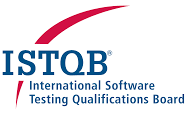Top 10 Open Source Automation Tools for Software Testers:
Top 10 Open Source Automation Tools for Software Testers:
In today’s fast-paced digital landscape, automation has become a crucial aspect of streamlining processes, increasing efficiency, and reducing human error. Open source automation tools offer a cost-effective solution for businesses of all sizes to automate various tasks across different domains. From software development to IT operations and beyond, these tools empower organizations to achieve more with less effort. In this article, we’ll delve into the top 10 open source automation tools, highlighting their pros and cons to help you make an informed decision.
Ansible
Pros:
- Agentless: Ansible doesn’t require any agent installation on managed nodes, making it lightweight and easy to set up.
- Simple Syntax: It employs YAML syntax, which is human-readable and straightforward, facilitating quick adoption.
- Wide Community Support: With a large user community, finding resources, modules, and support is relatively easy.
Cons:
- Limited Windows Support: While Ansible can manage Windows systems, its support is not as robust as for Linux-based systems.
- Steep Learning Curve: Complex automation tasks may require a deeper understanding of Ansible’s features and modules.
Jenkins
Pros:
- Extensible: Jenkins offers a vast array of plugins to extend its functionality, catering to diverse automation needs.
- Strong Integration: It integrates seamlessly with other tools and technologies, such as Git, Docker, and Kubernetes.
- Continuous Integration: Jenkins excels in automating build, test, and deployment processes, fostering a DevOps culture.
Cons:
- Resource Intensive: Running multiple jobs simultaneously can consume significant system resources, requiring careful resource management.
- Complex Setup: Setting up Jenkins initially may involve configuration overhead, especially for users new to continuous integration.
Puppet
Pros:
- Declarative Language: Puppet uses a declarative language to define system states, simplifying configuration management.
- Scalability: It scales well across large infrastructures, making it suitable for enterprise-level automation.
- Comprehensive Reporting: Puppet provides detailed reports on system configurations, aiding in compliance and auditing.
Cons:
- Learning Curve: Mastering Puppet’s DSL (Domain-Specific Language) may require time and effort, especially for beginners.
- Centralized Architecture: Puppet’s reliance on a centralized server can introduce a single point of failure if not adequately managed.
Selenium
Pros:
- Cross-Browser Testing: Selenium allows for automated testing across multiple web browsers, ensuring compatibility.
- Language Support: It supports various programming languages like Java, Python, and C#, providing flexibility to developers.
- Robust Testing Framework: Selenium offers robust features for functional testing, including record and playback capabilities.
Cons:
- Complex Setup: Configuring Selenium for test automation may involve setting up drivers and managing dependencies.
- Maintenance Overhead: Test scripts may require frequent updates to adapt to changes in web application elements.
Chef
Pros:
- Infrastructure as Code (IaC): Chef enables managing infrastructure through code, promoting consistency and repeatability.
- Community Cookbooks: It boasts a vast library of community-contributed cookbooks, accelerating automation development.
- Support for Diverse Platforms: Chef supports various platforms, including Linux, Windows, and UNIX-like systems.
Cons:
- Verbose Syntax: Chef’s DSL can be verbose, potentially leading to longer development cycles and increased complexity.
- Complexity in Large Environments: Managing large infrastructures with Chef may require careful orchestration and resource planning.
Docker
Pros:
- Containerization: Docker facilitates lightweight and portable containerization, enabling consistent deployment across environments.
- Fast Deployment: Containers can be spun up and torn down quickly, promoting agility and scalability.
- Microservices Architecture: Docker aligns well with microservices architecture, allowing for modular and scalable application development.
Cons:
- Learning Curve: Understanding containerization concepts and Docker’s ecosystem may pose a learning curve for some users.
- Security Concerns: Improperly configured Docker containers can introduce security vulnerabilities, requiring stringent security practices.
Terraform
Pros:
- Infrastructure as Code (IaC): Terraform enables defining and provisioning infrastructure through code, enhancing agility.
- Multi-Cloud Support: It supports multiple cloud providers, allowing for seamless deployment across hybrid and multi-cloud environments.
- State Management: Terraform manages infrastructure state intelligently, facilitating drift detection and state rollback.
Cons:
- Complexity: Managing complex infrastructure configurations with Terraform may require advanced knowledge and planning.
- Resource Orchestration: Orchestrating dependent resources in Terraform can be challenging, requiring careful dependency management.
GitLab CI/CD
Pros:
- Integrated Solution: GitLab CI/CD is tightly integrated with GitLab, offering a seamless DevOps workflow from code repository to deployment.
- Pipeline Orchestration: It provides robust pipeline orchestration capabilities, allowing for complex build and deployment workflows.
- Visibility and Collaboration: GitLab CI/CD promotes visibility and collaboration among development teams with built-in code review and feedback features.
Cons:
- Resource Consumption: Running extensive CI/CD pipelines may consume significant resources, necessitating efficient resource allocation.
- Initial Setup Overhead: Configuring GitLab CI/CD pipelines may require upfront investment in defining workflows and integration points.
Grafana
Pros:
- Visualization: Grafana offers powerful visualization capabilities, enabling real-time monitoring and data insights.
- Plugin Ecosystem: It boasts a rich ecosystem of plugins and integrations, allowing for customization and extensibility.
- Alerting: Grafana provides robust alerting features, notifying users of critical events and anomalies in the data.
Cons:
- Learning Curve: Mastering Grafana’s querying and dashboard creation may require familiarity with its query language and UI.
- Resource Consumption: Displaying large datasets or running complex queries can strain system resources, impacting performance.
Nagios
Pros:
- Flexibility: Nagios is highly customizable and flexible. It allows users to monitor almost anything on their network, from servers and switches to applications and services. Users can define their own checks using plugins or scripts tailored to their specific needs.
- Wide Range of Plugins: Nagios has a vast ecosystem of plugins that extend its monitoring capabilities. There are thousands of plugins available for monitoring various devices, services, and applications. This makes it adaptable to a wide range of monitoring requirements.
- Alerting and Notification: Nagios provides robust alerting and notification features. Users can configure alerts to be sent via email, SMS, or other communication channels when predefined thresholds are breached or issues are detected. This helps ensure timely response to critical events.
- Centralized Monitoring: With Nagios, organizations can centrally monitor their entire IT infrastructure from a single location or dashboard. This centralized approach streamlines monitoring and troubleshooting processes, making it easier to detect and resolve issues.
- Historical Data Analysis: Nagios stores historical performance data, allowing users to analyze trends, identify patterns, and forecast potential issues. This helps in capacity planning, performance optimization, and decision-making processes.
- Active Community Support: Nagios has a large and active user community. This means that users can find extensive documentation, tutorials, forums, and community-contributed plugins to help them get started with Nagios and address any issues they encounter.
Cons:
- Steep Learning Curve: Setting up and configuring Nagios can be complex, especially for users with limited experience in monitoring systems and Linux administration. The initial learning curve can be daunting, requiring time and effort to become proficient with the tool.
- Scalability Challenges: While Nagios is capable of monitoring large-scale infrastructures, managing a large number of devices and services can become challenging. Performance may degrade as the number of monitored hosts and services increases, requiring careful optimization and resource management.
- Resource Intensive: Nagios can consume significant system resources, particularly when monitoring a large number of devices and services or when running frequent checks. This may necessitate allocating sufficient hardware resources or optimizing configuration settings to ensure optimal performance.
- Limited Visualization and Reporting: Nagios primarily focuses on monitoring and alerting, and its built-in reporting and visualization capabilities are relatively basic. Users may need to integrate Nagios with additional tools or plugins for more advanced reporting and visualization features.
- Maintenance Overhead: Nagios requires ongoing maintenance to ensure its smooth operation and effectiveness. This includes regular updates, configuration adjustments, plugin management, and troubleshooting. Managing and maintaining Nagios installations can be time-consuming, particularly in complex environments.
- Lack of Modern Features: Compared to some newer monitoring solutions, Nagios may lack certain modern features such as auto-discovery, dynamic scaling, and cloud-native monitoring capabilities. While it remains a robust and reliable monitoring tool, some organizations may prefer more feature-rich alternatives for their monitoring needs.
Cypress:
- Pros:
- Easy to set up and get started with.
- Supports writing tests in JavaScript, making it accessible to a wide range of developers.
- Offers real-time reloading, allowing testers to see the impact of code changes immediately.
- Provides a robust and reliable test execution environment.
- Excellent documentation and active community support.
- Cons:
- Limited support for testing non-web applications.
- Requires a good understanding of JavaScript for effective test creation.
- Some users may find the learning curve steep, especially those new to JavaScript or modern testing frameworks.
- Appium:
- Pros:
- Supports testing of mobile applications across different platforms (iOS, Android, Windows).
- Utilizes standard automation APIs, making it compatible with any programming language.
- Offers a wide range of testing capabilities, including functional, performance, and regression testing.
- Provides strong integration with various CI/CD tools.
- Supports both native and hybrid mobile applications.
- Cons:
- Setup and configuration can be complex, especially for beginners.
- Requires understanding of mobile app development concepts.
- Tests can be slower compared to other mobile testing tools.
- Maintenance overhead can be high due to frequent updates in mobile platforms and devices.
- Katalon:
- Pros:
- Provides a user-friendly interface for both technical and non-technical users.
- Supports both web and mobile application testing.
- Offers a wide range of built-in keywords for test automation.
- Integrates well with popular CI/CD tools.
- Provides detailed test reports and analytics.
- Cons:
- Limited customization options compared to other tools.
- May not be suitable for complex testing scenarios.
- Relatively slower execution speed compared to some other tools.
- Some advanced features are only available in the paid version.
- Selenium:
- Pros:
- Widely used and established within the testing community.
- Supports multiple programming languages, including Java, Python, C#, etc.
- Provides extensive support for cross-browser testing.
- Open-source with a large and active community for support and resources.
- Integration with various testing frameworks and CI/CD tools.
- Cons:
- Requires good programming skills to leverage its full potential.
- Setup and configuration can be complex, especially for beginners.
- Maintenance of test scripts can become challenging as applications evolve.
- Limited support for testing non-web applications.
- Postman:
- Pros:
- User-friendly interface for creating and managing API tests.
- Supports collaboration and sharing of API collections.
- Provides comprehensive features for API testing, including request/response validation, automated testing, and monitoring.
- Integrates well with CI/CD pipelines.
- Offers extensive documentation and a large community for support.
- Cons:
- Primarily focused on API testing, lacking capabilities for UI testing.
- Limited support for scripting and automation compared to other tools.
- Some advanced features are only available in the paid version.
- Performance testing capabilities are limited compared to specialized tools.
- Playwright:
- Pros:
- Supports testing across multiple browsers (Chrome, Firefox, WebKit) and platforms (Windows, macOS, Linux).
- Provides a simple and intuitive API for writing tests in JavaScript, TypeScript, Python, or C#.
- Offers built-in support for testing PWAs (Progressive Web Apps) and single-page applications.
- Integration with popular testing frameworks like Jest and Mocha.
- Active development with frequent updates and improvements.
- Cons:
- Relatively newer compared to other testing tools, so documentation and community support may not be as extensive.
- Requires understanding of JavaScript or one of the supported programming languages.
- Limited support for mobile testing compared to other tools like Appium.
- Some advanced features may still be under development or experimental.
- Conclusion
- Open source automation tools have revolutionized the way businesses streamline operations, improve efficiency, and drive innovation. Each of the top 10 tools discussed in this article offers unique features and capabilities, catering to different automation requirements across various domains. By weighing the pros and cons of each tool against your specific needs and objectives, you can make an informed decision to enhance your automation efforts.











